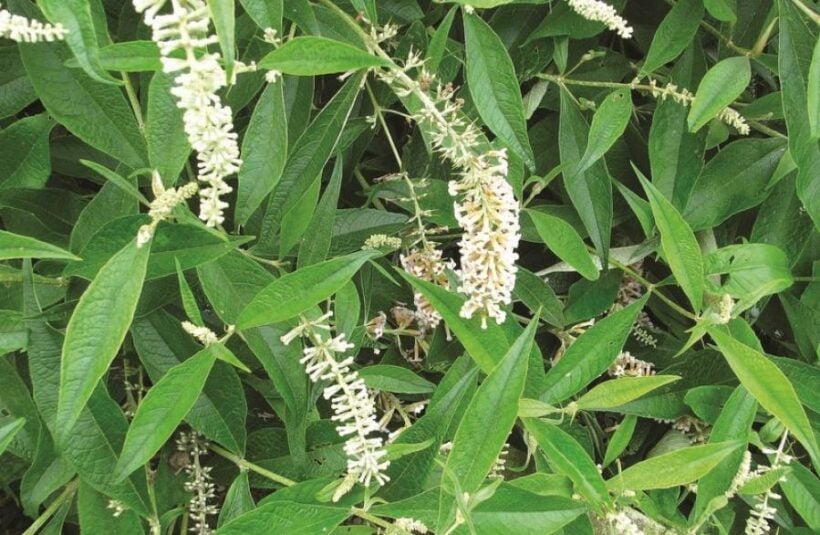Gardening: Shades of white in Phuket gardens

PHUKET: White has many associations, including innocence and purity. On the down side, it represents coldness and sterility.
In Thailand, judging by the dominance of white in floral garlands, it brings good fortune. Most lucky leis contain white flowers – buds of jasmine and milkweed, plus a pair of creamy magnolias for good measure.
The white spectrum is equally well represented in the average Phuket garden – from the pure white of the flowering jessamines, boxwoods and bauhinias, to the creamy-tinted flowers of brunfelsia or buddleia paniculata. Most of these are fragrant, as though Mother Nature decided that their pallor needed something extra to attract the attention of pollinating insects or perfume-loving humans.
To illustrate my point: the two most perfumed plants in my garden are the racemes of buddleia and the fiddlewood (citharexylum spinosum). Both are relatively insignificant visually, but the scent is rich and intense, especially in the morning. A word of warning: the fiddlewood is sometimes sold as a buddleia, but a buddleia it ain’t. It has distinctive, bright green leaves (the buddleia’s are grey-green and rough), and it grows rapidly. Unless you want a specimen or shade, it is not for the cottage garden.
Other white bloomers are more tractable and available. Take the gardenia (cape jasmine). A member of the madder family (rubiaciae), florists love it on account of its large, scented blooms and glossy, evergreen leaves.
Its flowers are usually creamy white and exist in any number of cultivars which range from semi-double varieties such as ‘Magnifica’ to the double ‘Mystery’. Preferring acidic soil, it is a good choice for a container, but needs plenty of fertilizer.
The dwarf tabernaemontana has smaller flowers that remind me of propellers and look as though they should be revolving in the breeze. An evergreen shrub with a compact habit, it will, given plenty of water, flower regularly. Fragrant, especially at night, it is easy to propagate from seeds or cuttings.
Jasminum sambac (Arabian jessamine), another sweetie, is well known in Thailand as mali son. Its white flowers are star-shaped, appear in clusters all year round and are tolerant of dry soil. Both jasminum multiflorum (star jasmine or mali phueng) and rex (royal jasmine or pan yii) have evergreen foliage. Both climbers need moisture and support for their branches. Given these conditions, they will bloom for most of the year.
A favorite of mine is the orange jasmine (murraya paniculata). It is self-supporting, and in three years will grow into a neat, four-meter-tall bush. It has a spicy fragrance, is easy going and will tolerate being clipped and pruned.
So too wrightia religiosa (mok baan), a white flowering shrub from the apocynaceae family. A favorite with Thais, it is usually grown as a hedge, or arranged as a front line of earthenware pots. Its flowers are pendulous and bell-shaped, but insignificant. However, it is evergreen, tolerates shade and blooms persistently. Yet another of those white shrubs that smells divine.
If you have gardening or environmental concerns, contact Patrick at drpaccampbell@ gmail.com. Many of his creative and academic publications can be found on his website: Green galoshes.
— Patrick Campbell
Latest Thailand News
Follow The Thaiger on Google News:


























